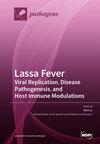A Systematical Review on ART Use in HTLV Infection: Clinical, Virological, and Immunological Outcomes
IF 3.3
3区 医学
Q2 MICROBIOLOGY
引用次数: 0
Abstract
Human T-cell lymphotropic virus (HTLV) infection affects over ten million people worldwide, but there is no effective treatment so far. This review describes the virological, immunological, and clinical outcomes of antiretroviral therapy (ART) in people with HTLV infection. This systematic review followed PRISMA reporting guidelines and was registered in PROSPERO: CRD42022350076. The Newcastle–Ottawa Scale, adapted for cross-sectional studies, and Rob-2 were used to assess the methodological quality of these studies. Systematic searches were conducted in the Medline (PubMed), Scopus (Elsevier), Cochrane Library, and Web of Science (Clarivate Analytics) databases. We retrieved data from eight methodologically diverse articles on treatment of patients infected by HTLV-1 or HTLV-2 alone, or coinfected by HIV-1, who received Raltegravir, Tenofovir, Lamivudine, or Zidovudine. The proviral load decreased in three out of seven studies over 4 to 48 weeks of antiretroviral use. Cellular immune response (CD4, CD8, CD25, CD69, and CD71 cells) was evaluated in six studies. While no significant clinical improvement was observed, all studies reported clinical stability during treatment. Despite the demonstrated antiviral activity of ART, in vitro, clinical improvement was not proven. Most studies showed disease stability during ART use, suggesting potential clinical benefits. There is a need of larger, well-controlled trials to define the role of ART in the treatment of HTLV infection.系统回顾抗逆转录病毒疗法在 HTLV 感染中的应用:临床、病毒学和免疫学结果
人类 T 细胞淋巴细胞病毒(HTLV)感染影响着全球一千多万人,但迄今为止还没有有效的治疗方法。本综述介绍了抗逆转录病毒疗法(ART)对 HTLV 感染者的病毒学、免疫学和临床疗效。本系统综述遵循 PRISMA 报告指南,并在 PROSPERO 注册:CRD42022350076。纽卡斯尔-渥太华量表(适用于横断面研究)和 Rob-2 用于评估这些研究的方法学质量。我们在 Medline (PubMed)、Scopus (Elsevier)、Cochrane Library 和 Web of Science (Clarivate Analytics) 数据库中进行了系统检索。我们从八篇方法各异的文章中检索到了有关治疗单独感染 HTLV-1 或 HTLV-2 或合并感染 HIV-1 的患者的数据,这些患者接受了雷特格韦、替诺福韦、拉米夫定或齐多夫定治疗。在使用抗逆转录病毒药物 4 至 48 周的七项研究中,有三项研究的病毒载量有所下降。六项研究对细胞免疫反应(CD4、CD8、CD25、CD69 和 CD71 细胞)进行了评估。虽然没有观察到明显的临床改善,但所有研究都报告了治疗期间的临床稳定性。尽管抗逆转录病毒疗法在体外具有抗病毒活性,但临床改善并未得到证实。大多数研究显示,使用抗逆转录病毒疗法期间病情稳定,这表明该疗法具有潜在的临床益处。需要进行更大规模、对照良好的试验,以确定抗逆转录病毒疗法在治疗 HTLV 感染中的作用。
本文章由计算机程序翻译,如有差异,请以英文原文为准。
求助全文
约1分钟内获得全文
求助全文
来源期刊

Pathogens
Medicine-Immunology and Allergy
CiteScore
6.40
自引率
8.10%
发文量
1285
审稿时长
17.75 days
期刊介绍:
Pathogens (ISSN 2076-0817) publishes reviews, regular research papers and short notes on all aspects of pathogens and pathogen-host interactions. There is no restriction on the length of the papers. Our aim is to encourage scientists to publish their experimental and theoretical research in as much detail as possible. Full experimental and/or methodical details must be provided for research articles.
 求助内容:
求助内容: 应助结果提醒方式:
应助结果提醒方式:


